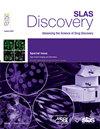Cytotoxic Profiling of Korea Chemical Bank Diversity Library
IF 2.7
4区 生物学
Q2 BIOCHEMICAL RESEARCH METHODS
引用次数: 0
Abstract
Cytotoxicity profiling of screening libraries is a critical component in early-stage drug discovery to identify compounds with undesirable toxic effects. Here, we report the cytotoxicity profiling of the Korea Chemical Bank (KCB) diversity library, comprising 7040 compounds curated via virtual screening, clustering, and druggability assessment. A subset of 5181 compounds was randomly selected and screened using the WST-1 assay in five mammalian cell lines (HEK293, HFL1, HepG2, NIH3T3, and CHOK1) at concentrations of 30 µM and 10 µM, following 24 h and 48 h incubation periods. Cytotoxic compounds were defined as those exhibiting >50 % inhibition at 30 µM after 48 h. A total of 17 compounds showed consistent cytotoxicity across all five cell lines. Comparative analysis of physicochemical properties revealed that cytotoxic compounds exhibited higher lipophilicity (ALogP/ LogD) and the number of aromatic rings (AR) relative to non-cytotoxic compounds. These results indicate that the majority of the KCB diversity library comprises non-cytotoxic compounds, reflecting effective pre-filtering of toxic physicochemical properties during library design.
韩国化学银行多样性库的细胞毒性分析
筛选文库的细胞毒性分析是早期药物发现中识别具有不良毒性作用的化合物的关键组成部分。在这里,我们报告了韩国化学银行(KCB)多样性文库的细胞毒性分析,该文库包括7040种化合物,通过虚拟筛选、聚类和药物性评估。在5种哺乳动物细胞系(HEK293、HFL1、HepG2、NIH3T3和CHOK1)中,随机选择5181个化合物,在浓度为30µM和10µM的条件下,经过24 h和48 h的孵育,使用WST-1试验进行筛选。细胞毒性化合物被定义为48小时后在30µM下表现出50%的抑制作用。共有17种化合物在所有5种细胞系中表现出一致的细胞毒性。理化性质对比分析表明,细胞毒性化合物的亲脂性(ALogP/ LogD)和芳香环数(AR)均高于非细胞毒性化合物。这些结果表明,大多数KCB多样性文库包含非细胞毒性化合物,反映了在文库设计过程中对毒性物理化学性质进行了有效的预过滤。
本文章由计算机程序翻译,如有差异,请以英文原文为准。
求助全文
约1分钟内获得全文
求助全文
来源期刊

SLAS Discovery
Chemistry-Analytical Chemistry
CiteScore
7.00
自引率
3.20%
发文量
58
审稿时长
39 days
期刊介绍:
Advancing Life Sciences R&D: SLAS Discovery reports how scientists develop and utilize novel technologies and/or approaches to provide and characterize chemical and biological tools to understand and treat human disease.
SLAS Discovery is a peer-reviewed journal that publishes scientific reports that enable and improve target validation, evaluate current drug discovery technologies, provide novel research tools, and incorporate research approaches that enhance depth of knowledge and drug discovery success.
SLAS Discovery emphasizes scientific and technical advances in target identification/validation (including chemical probes, RNA silencing, gene editing technologies); biomarker discovery; assay development; virtual, medium- or high-throughput screening (biochemical and biological, biophysical, phenotypic, toxicological, ADME); lead generation/optimization; chemical biology; and informatics (data analysis, image analysis, statistics, bio- and chemo-informatics). Review articles on target biology, new paradigms in drug discovery and advances in drug discovery technologies.
SLAS Discovery is of particular interest to those involved in analytical chemistry, applied microbiology, automation, biochemistry, bioengineering, biomedical optics, biotechnology, bioinformatics, cell biology, DNA science and technology, genetics, information technology, medicinal chemistry, molecular biology, natural products chemistry, organic chemistry, pharmacology, spectroscopy, and toxicology.
SLAS Discovery is a member of the Committee on Publication Ethics (COPE) and was published previously (1996-2016) as the Journal of Biomolecular Screening (JBS).
 求助内容:
求助内容: 应助结果提醒方式:
应助结果提醒方式:


